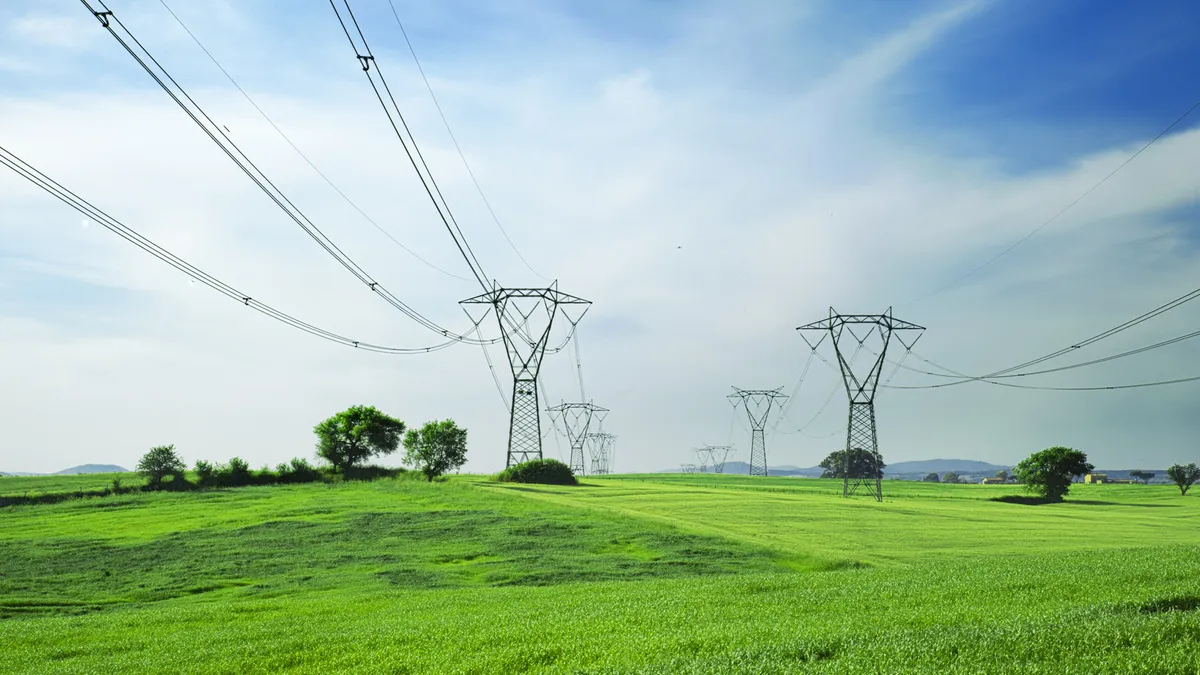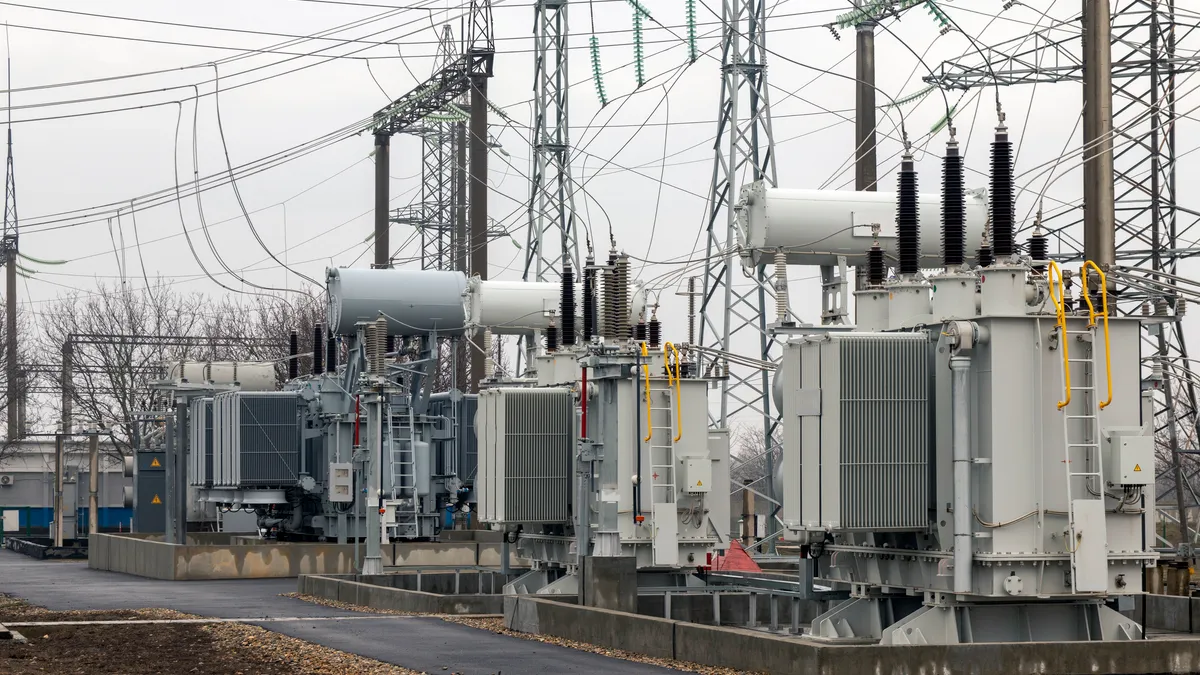It still won't likely be finalized for a month or two, but already there is a glut of opinions and projections on how the EPA's Clean Power Plan will affect the economy. Conservative media and research outlets hammer away at expected job losses from the fossil fuel industry and the possibility of higher power prices, while environmentalists and Obama administration backers point to anticipated gains from increased investment in renewables, efficiency, transmission, and other clean energy infrastructure.
No one can be sure of the outcomes of the plan at this point — it's still only a proposed rule, after all — but a new independent study from University of Maryland economists and the energy consulting firm Industrial Economics casts a wider net than many previous economic analyses.
"The most important takeaway from our analysis is that, after accounting for the various ways in which the Clean Power Plan puts upward and downward pressure on employment, we find a net increase in jobs,” explained Industrial Economics Principal Jason Price, co-author of Assessment of the Economy-wide Employment Impacts of EPA’s Proposed Clean Power Plan.
“This analysis estimates a net gain of 74,000 jobs in 2020, and projects that these annual employment gains will increase to 196,000 to 273,000 jobs between 2025 and 2040,” the study reports. “These results represent a 0.1% to 0.2% increase in civilian employment.”
The authority of the independent study, done by Industrial Economics and the Inter-industry Economic Research Fund of the University of Maryland’s Department of Economics, comes from its use of the Long-term Inter-industry Forecasting Tool (LIFT). LIFT is a state-of-the-art macro-econometric modeling tool developed and maintained by the University of Maryland’s Inter-industry Forecasting Project (Inforum).
Other projections split
The Maryland-Industrial Economics study contradicts warnings from utilities, the fossil fuel industries, and heavy users of traditional fossil-generated electricity.
The CPP will “suppress average annual U.S. Gross Domestic Product (GDP) by $51 billion and lead to an average of 224,000 fewer U.S. jobs every year through 2030,” according to the U.S. Chamber of Commerce’s report, "Assessing the Impact of Potential New Carbon Regulations in the United States." The Chamber has aligned itself firmly against the EPA carbon regulations, and filed in support of a federal lawsuit brought against the rule by coal giant Murray Energy and a coalition of 15 states.
“The typical household could lose a total of $3,400 in real disposable income during the modeled 2014-30 timeframe,” the report reads.
Other conservative groups have weighed in with studies as well. By 2030, the regulation will produce “an average employment shortfall of nearly 300,000 jobs,” according to research and modeling from Heritage Foundation, a Washington think tank. That will include “a peak employment shortfall of more than 1 million jobs, 500,000 jobs lost in manufacturing, [d]estruction of more than 45 percent of coal-mining jobs, loss of more than $2.5 trillion in aggregate gross domestic product, and total income loss of more than $7,000 per person.”
Unsurprisingly, environmental groups and Obama administration allies have concluded otherwise. Mandated emissions reductions, according to a report from the Natural Resources Defense Council, “would save American households and businesses $37.4 billion on their electric bills in 2020 while creating more than 274,000 efficiency-related jobs across the country.”
Support for the CPP also comes from studies that show significant health benefits in emissions reductions. A study released this week from Harvard and Syracuse University researchers reports controlling power plant pollution will save 3,500 lives per year from reduced cardiac and respiratory pathologies. Such effects have strong parallel economic impacts.
"We went into this analysis,” Price said of the independent University of Maryland work, “not knowing what to expect in terms of the direction of the overall net effect.”
Why the Maryland report predicts job growth
Price’s team expanded on EPA’s regulatory impact analysis (RIA) of the CPP because they found it inadequate. It distinguishes “between supply-side employment impacts for the power and fuel production sectors and demand-side effects associated with energy efficiency activities,” Price's team reports.
The supply-side analysis shows changes in labor demand from power plant heat rate improvements, construction of new electricity generation, changes in fuel use, and reductions in electricity generation from demand-side energy efficiencies. The demand-side analysis shows labor changes in energy efficiency spending the rule is expected to drive.
EPA’s conclusion was that the rule would create a loss of 77,900 job years on the supply side and a gain of 112,000 job years on the demand side in 2025, but the University of Maryland team disagrees.
“EPA’s analysis provides a reasonable first approximation of the proposed rule’s employment effects,” the new study explains, but “its focus on direct employment impacts does not capture various indirect employment impacts.”
The goal of the Price group’s study was to identify “the full range of effects that might influence the Plan’s employment impacts.” These effects do not all affect jobs numbers in the same direction and some work in complicated, contradictory ways.
Changes in electricity prices, the study notes as an example, affect firms’ production costs and thereby affect the prices they charge. Changes in the prices of their goods and services then impact the jobs market.
Or environmental regulations may increase abatement costs for polluters, forcing them to raise prices and, as a result, lose sales. That could cause layoffs. On the other hand, spending and construction for abatements will likely create jobs.
Impacts like these are further complicated by the many other factors that affect employment. But after accounting for the fullest possible range of effects, the CPP “is likely to increase U.S. employment by up to 273,000 jobs,” the researchers concluded, or “roughly the equivalent of one month of healthy job gains.”
"Increased energy efficiency is the main driver behind this result,” Price said. “As energy expenditures decline due to increased energy efficiency, resources are freed up for other purposes. In addition, while expenditures on energy efficiency represent a cost, these expenditures create demand for labor that contributes to our finding of a net positive effect on employment."
The study explains this in greater detail. “Energy efficiency improvements at the retail level,” the study reports, “contributes to the estimated reduction in wholesale prices; the costs of these measures are not incurred by power producers but lead to a reduction in demand, causing wholesale prices to decline as well.”
That price reduction should grow employment, the study concludes, “particularly for industrial electricity customers that purchase electricity on the wholesale market.”
What all sides agree on
There is at least one point on which the new study, Obama administration allies, and Obama administration opponents agree: The CPP’s near-term impacts will be location-specific. “Because LIFT is a national model, we did not estimate employment impacts by state or by region,” Price explained. “Drilling down to too fine a spatial scale though would add significant uncertainty to the results."
“Rural Arizona will be “left holding the bag for the federal government’s short-term thinking,” Grand Canyon State Electric Cooperative Association President Joe Kay recently editorialized.
“EPA has predicted that over half of Texas' coal generation will have to be shut down under the proposed plan, with plant closures across the state,” Balanced Energy Texas General Counsel Mike Nasi recently wrote. “What does this means for Texas? Lost jobs, higher electricity rates, and greater chances of rolling blackouts.”
Economic and job impacts in the coal industry will be “very localized,” University of Maryland economist and study co-author Doug Meade recently told Forbes. As in the shale gas and oil industries, workers “may have to move to other places.” But, he added, “the economy does heal. For industries that lose jobs there will, eventually, be demand in other places.”
The study includes two crucial stipulations. First, it caveats, the findings apply to the CPP. Not all greenhouse gas or pollution mitigation initiatives would necessarily be expected to grow jobs and the economy. “The direction and magnitude of employment impacts would depend on many factors,” it reports.
Second, it adds, jobs are just one of the many metrics policymakers and the public should consider in evaluating the rule’s implications “for the economy and the public at large.”





















